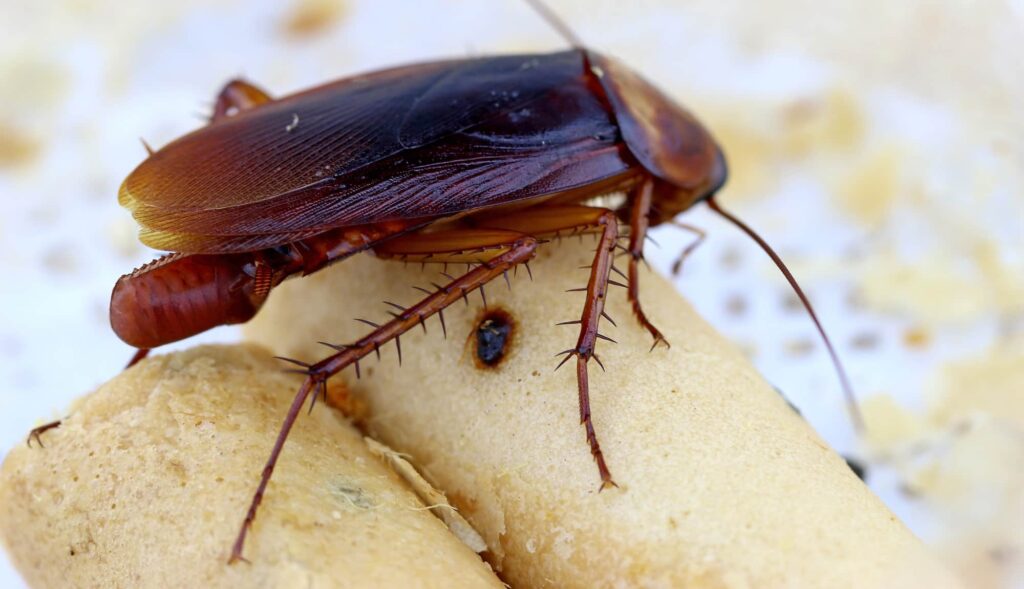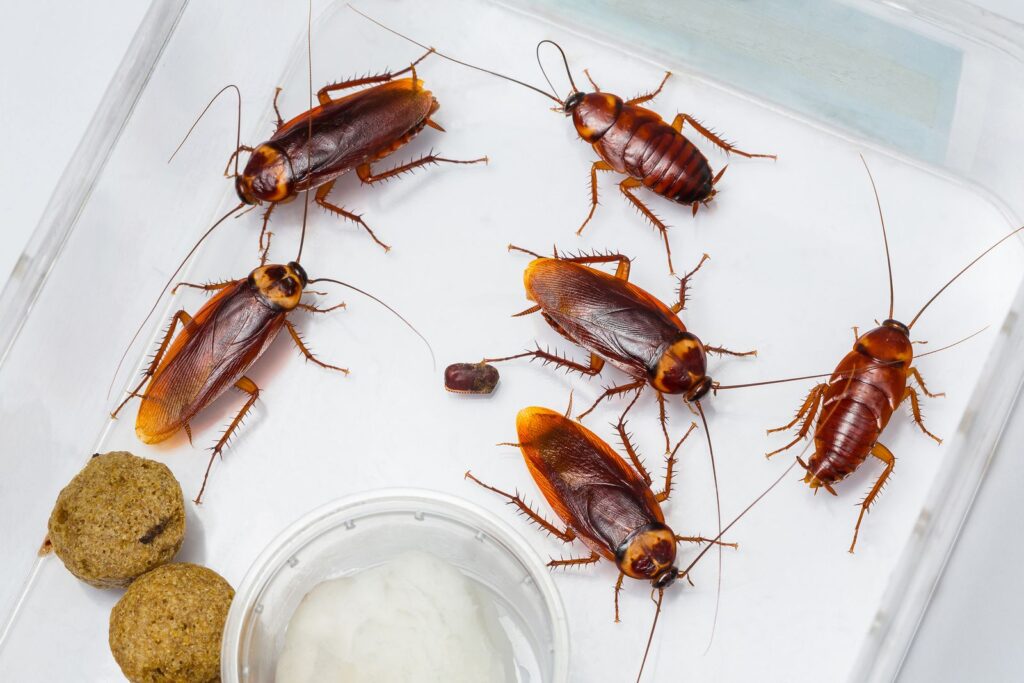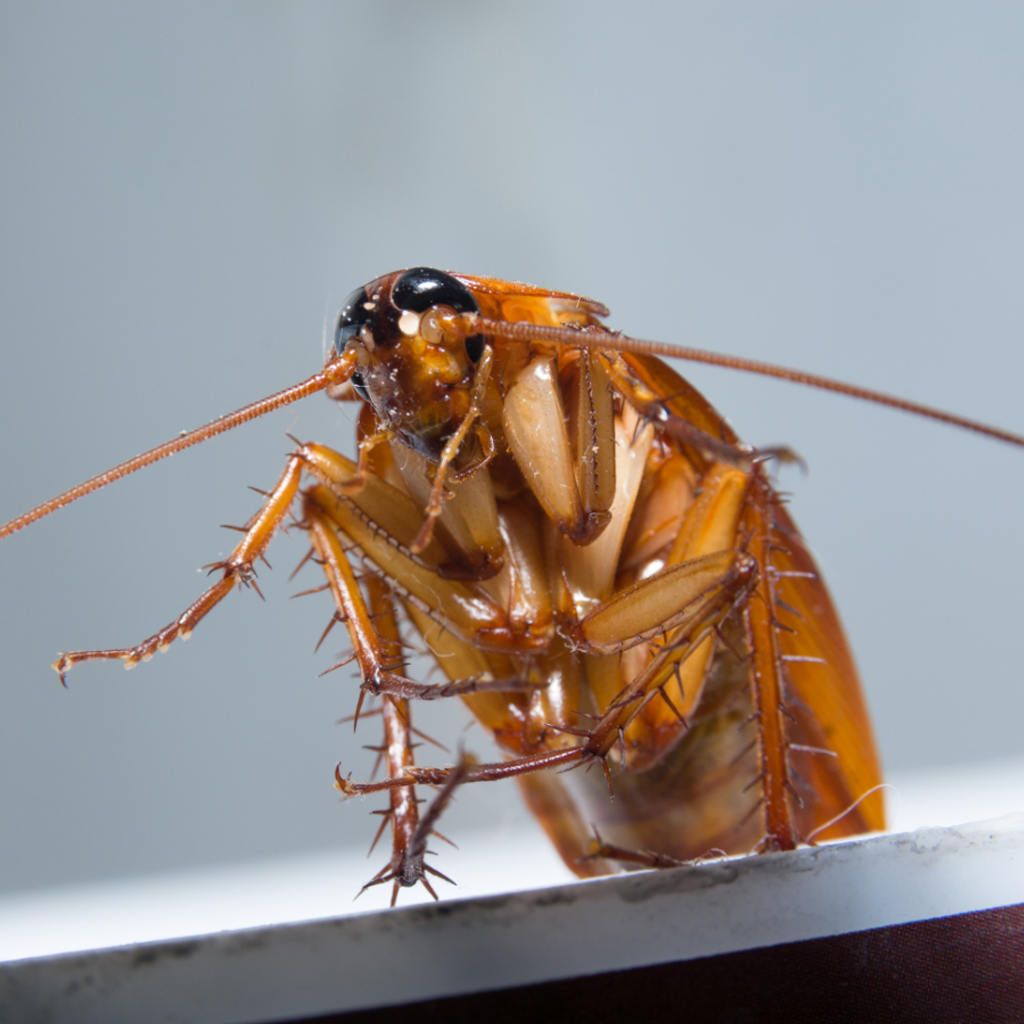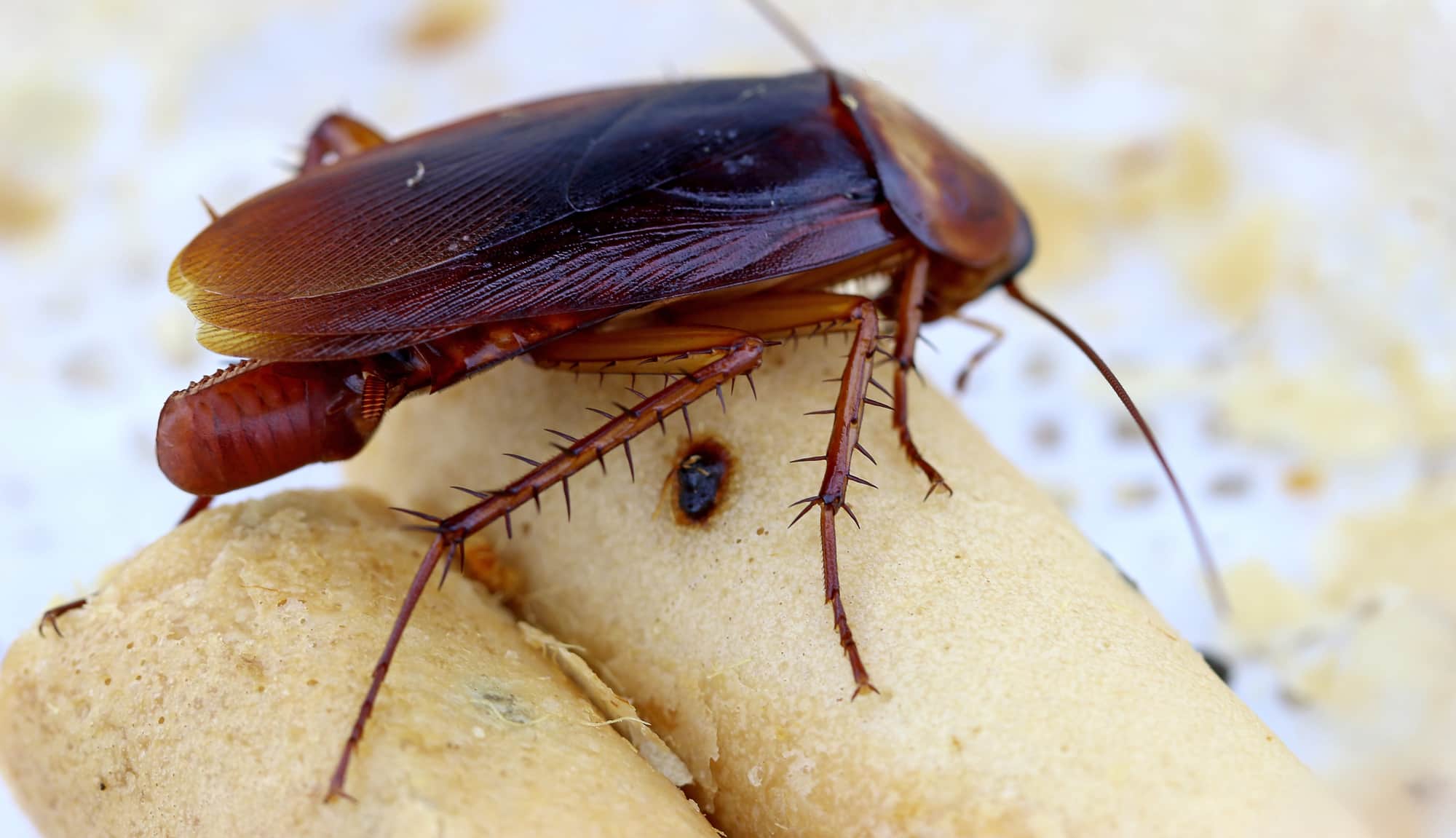
Introduction: Cockroach infestation can be a persistent and distressing problem for homeowners. These resilient pests not only pose a threat to hygiene but can also trigger allergies and spread diseases. To combat this issue, professional pest control services offer targeted solutions to eradicate cockroaches and prevent future outbreaks. In this article, we explore the importance of pest control services specifically tailored for cockroach infestations.
Understanding Cockroach Behavior: Cockroaches are notorious for their ability to thrive in various environments, thanks to their adaptable nature and rapid reproduction rate. They are commonly found in dark, damp areas such as kitchens, bathrooms, basements, and hidden crevices. Cockroaches are nocturnal creatures, making them elusive during the day and difficult to detect until the infestation becomes severe.

The Dangers of Cockroach Infestation: Aside from being unsightly, cockroach infestations pose significant health risks. These pests carry and transmit pathogens that can cause food poisoning, diarrhea, allergies, and respiratory issues. Their shed skin, feces, and saliva contain allergens that can trigger asthma attacks and allergic reactions, particularly in sensitive individuals.
Professional Pest Control Solutions: Professional pest control services specialize in the effective eradication of cockroaches while prioritizing the safety of occupants and the environment. These services employ trained technicians who understand the behavior and biology of cockroaches, enabling them to develop tailored strategies for eradication.
Integrated Pest Management (IPM) Approach: Many reputable pest control companies adopt an Integrated Pest Management (IPM) approach, which emphasizes a combination of preventive measures, inspection, and targeted treatments. IPM techniques may include:
Inspection and Identification: Thorough examination of the property to identify cockroach hotspots, entry points, and nesting Inspection and Identification:
Thorough inspection and accurate identification are crucial steps in effective cockroach pest control. Trained technicians conduct meticulous examinations of both the interior and exterior of the property to locate signs of cockroach activity and identify conducive conditions for infestation. Here are some detailed aspects of this process:
- Visual Inspection: Technicians carefully scrutinize common cockroach hiding spots such as kitchens, bathrooms, utility rooms, and basements. They inspect areas where food crumbs, grease, and moisture accumulate, as these serve as attractants for cockroaches.
- Identification of Species: Different species of cockroaches may infest homes, with the German cockroach, American cockroach, and Oriental cockroach being the most common. Technicians are trained to identify the species present, as this influences treatment methods and strategies.
- Use of Monitoring Devices: Pest control professionals may deploy monitoring devices such as sticky traps or pheromone traps to assess the extent of the infestation and determine cockroach activity patterns. These devices help in pinpointing high-traffic areas and nesting sites.
- Assessment of Entry Points: Cockroaches can enter buildings through tiny cracks, gaps in doors and windows, utility penetrations, and plumbing conduits. Technicians thoroughly inspect these entry points and recommend sealing measures to prevent further intrusion.
- Nesting Site Identification: Cockroaches prefer dark, secluded areas for nesting and harborage. Technicians meticulously search for these hiding spots, including behind appliances, in wall voids, under sinks, and within cluttered areas. Identifying and treating nesting sites is critical for long-term eradication.
- Evaluation of Environmental Factors: Technicians assess environmental conditions such as temperature, humidity levels, and availability of food and water sources. Understanding these factors helps in formulating customized treatment plans and preventive measures.
- Client Communication: Throughout the inspection process, technicians maintain clear communication with the homeowner or property manager. They provide detailed findings, educate clients about cockroach behavior and conducive conditions, and offer recommendations for sanitation practices and structural modifications to deter future infestations.
By conducting a comprehensive inspection and accurate identification of cockroach infestation factors, pest control professionals lay the groundwork for targeted and effective treatment strategies. This proactive approach maximizes the success of cockroach eradication efforts and helps homeowners achieve long-term relief from these resilient pests.
- sites.
- Sanitation Recommendations: Advising homeowners on proper sanitation practices to eliminate food and water sources that attract cockroaches.
- Sealing Entry Points: Sealing cracks, gaps, and other entry points to prevent cockroaches from entering the premises.
Chemical Treatments: Application of safe and approved insecticides in targeted areas, such as baseboards, cracks, and voids, to eliminate existing cockroach populations. Chemical Treatments:
Chemical treatments play a vital role in the eradication of cockroach infestations, complementing other integrated pest management (IPM) techniques to achieve comprehensive control. Pest control professionals employ a range of insecticides and application methods tailored to the specific needs of each infested area. Here’s a closer look at the various aspects of chemical treatments for cockroach pest control:
- Selection of Insecticides: Pest control technicians choose insecticides based on factors such as the species of cockroaches present, the severity of the infestation, and environmental considerations. Commonly used insecticides for cockroach control include residual sprays, baits, dusts, and growth regulators.
- Residual Sprays: Residual insecticide sprays are applied to surfaces where cockroaches are likely to travel, such as baseboards, cracks, crevices, and entry points. These sprays leave behind a long-lasting residue that continues to be effective against cockroaches for an extended period, providing ongoing protection.
- Baits: Cockroach baits consist of attractive food-based formulations combined with insecticidal ingredients. Technicians strategically place bait stations in areas of cockroach activity, enticing the pests to consume the bait and share it with others through grooming and feeding behaviors. Baits are effective at targeting cockroach colonies at their source and can provide sustained control over time.
- Dusts: Insecticidal dusts are applied in voids, wall cavities, and other inaccessible areas where cockroaches hide and breed. These dust formulations adhere to the cockroaches’ bodies, leading to their eventual demise. Dusts are particularly useful for treating hard-to-reach spaces and achieving thorough coverage.
- Growth Regulators: Insect growth regulators (IGRs) disrupt the reproductive cycle of cockroaches, inhibiting their ability to develop into mature adults. IGRs are typically applied as sprays or baits and work by interfering with the growth and molting processes of cockroach nymphs, ultimately reducing population growth.
- Safety Precautions: Pest control professionals prioritize safety when applying chemical treatments, following strict guidelines and regulations to minimize risks to occupants, pets, and the environment. They use low-toxicity formulations and apply products in accordance with label instructions and best practices.
- Post-Treatment Monitoring: Following chemical treatments, pest control technicians conduct regular follow-up inspections to assess treatment efficacy and monitor cockroach activity levels. Additional treatments may be applied as needed to address any remaining infestations and prevent reinfestation.
- Client Education: Pest control professionals provide homeowners with comprehensive information about the chemical treatments used, including safety precautions, potential risks, and recommended post-treatment practices. Clients are advised on proper ventilation, temporary relocation of pets, and precautions for sensitive individuals such as infants, elderly, or individuals with respiratory conditions.
By utilizing targeted chemical treatments in conjunction with other IPM strategies, pest control professionals can effectively eliminate cockroach infestations and provide homeowners with long-term relief from these resilient pests. These treatments are applied with precision and expertise, ensuring maximum effectiveness while prioritizing the safety and well-being of occupants and the environment.
- Monitoring and Follow-Up: Regular monitoring and follow-up inspections to ensure the effectiveness of treatments and address any resurgence of cockroach activity.
Monitoring and Follow-Up:
Continuous monitoring and diligent follow-up are essential components of effective cockroach pest control programs. Pest control professionals employ a proactive approach to ensure that treatment methods are successful in eradicating cockroach infestations and preventing their resurgence. Here are additional details on monitoring and follow-up procedures:
- Regular Inspections: Following initial treatment, pest control technicians schedule periodic follow-up inspections to assess the efficacy of the implemented control measures. These inspections involve thorough examinations of previously infested areas, as well as potential harborage sites and entry points.
- Monitoring Devices: Pest control professionals may deploy monitoring devices such as sticky traps, pheromone traps, or electronic monitoring systems to track cockroach activity levels. These devices help in gauging the effectiveness of treatment efforts and identifying any remaining hotspots of infestation.
- Assessment of Population Dynamics: Through ongoing monitoring, technicians analyze changes in cockroach population dynamics, including population size, distribution, and reproductive activity. This information informs adjustments to treatment strategies and ensures that control measures remain tailored to the evolving needs of the infestation.
- Identification of Residual Infestations: Despite initial treatment, residual infestations or new cockroach introductions may occur over time. Pest control professionals meticulously search for any signs of resurgence, promptly addressing emerging infestations to prevent them from escalating into larger problems.
- Re-Treatment as Necessary: If monitoring reveals persistent cockroach activity or signs of reinfestation, pest control technicians administer targeted re-treatments using appropriate insecticides or control methods. These re-treatments are strategically applied to known hotspots and areas of concern, effectively suppressing cockroach populations and preventing their reestablishment.
- Documentation and Reporting: Pest control professionals maintain detailed records of monitoring findings, treatment procedures, and follow-up actions. These records serve as valuable reference points for tracking progress, evaluating the effectiveness of control measures, and providing documentation for regulatory compliance or client reference.
- Client Communication: Throughout the monitoring and follow-up process, pest control technicians maintain open communication with homeowners or property managers. They provide transparent updates on the status of the infestation, share insights gained from monitoring activities, and offer recommendations for ongoing prevention and maintenance.
- Educational Outreach: Pest control professionals use follow-up visits as opportunities to educate clients about cockroach prevention strategies, sanitation practices, and structural modifications to minimize the risk of future infestations. By empowering homeowners with knowledge and proactive measures, pest control services contribute to long-term pest management success.
By implementing rigorous monitoring protocols and proactive follow-up procedures, pest control professionals ensure the sustained effectiveness of cockroach control efforts. Through ongoing assessment, adjustment, and communication, these professionals strive to create environments that are inhospitable to cockroach infestations, promoting the health and well-being of occupants and preserving the integrity of the treated premises.
Benefits of Professional Pest Control Services: Engaging professional pest control services for cockroach eradication offers several advantages:
- Efficiency: Trained technicians utilize advanced techniques and products to eliminate cockroaches quickly and effectively.
- Safety: Pest control companies prioritize the safety of occupants and pets by using environmentally friendly and low-toxicity products.
- Preventive Measures: Implementing preventive strategies helps to minimize the risk of future infestations, providing long-term relief from cockroach problems.
- Peace of Mind: Professional pest control services offer peace of mind, knowing that the infestation is being addressed by experts with the necessary skills and resources.
Conclusion: Cockroach infestations can be a persistent nuisance, but professional pest control services offer effective solutions to combat these pests and safeguard your home and family. By employing integrated pest management techniques and tailored treatments, pest control experts can eradicate cockroaches and prevent their return, ensuring a clean and healthy living environment. Don’t let cockroaches take over your home – invest in professional pest control services today for lasting relief.

